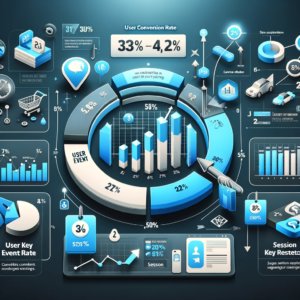User Conversion Rate Metrics: New Enhancements in Google Analytics
Google Analytics has introduced advanced metrics to improve tracking of user conversion rates, providing businesses with tools to enhance conversion tracking and overall user engagement.
Overview of New Metrics:
The update introduces two key metrics: User Key Event Rate and Session Key Event Rate.
These metrics are now automatically included in the standard User Acquisition and Traffic Acquisition reports, making conversion measurement easier without manual setup.
User Key Event Rate:
This metric calculates the percentage of users who complete a key action, such as making a purchase or signing up for a service.
It is determined by dividing the number of users who perform the desired action by the total number of users.
Session Key Event Rate:
This metric measures the percentage of sessions that lead to a key event conversion.
It’s calculated by dividing the number of key events by the total number of sessions.
Automatic Integration:
Existing Google Analytics users will find these new metrics already integrated into their User Acquisition and Traffic Acquisition reports, simplifying access and usage.

Benefits for Businesses:
Enhanced Conversion Tracking: The new metrics offer a simplified, clear view of conversions, making it easier for businesses to measure marketing effectiveness.
Optimized Acquisition Channels: By analyzing which channels and campaigns drive higher conversion rates, businesses can strategically allocate resources and refine their marketing tactics.
Improved User Experience: Low conversion rates can highlight areas where user experience needs improvement, allowing businesses to enhance user journeys and minimize friction.
Goal Measurement: Clear and measurable conversion data helps businesses set specific targets and monitor their progress over time.
By incorporating these new metrics into their reports, businesses can gain deeper insights into user behavior, empowering them to make more informed decisions and improve their overall marketing strategies.
